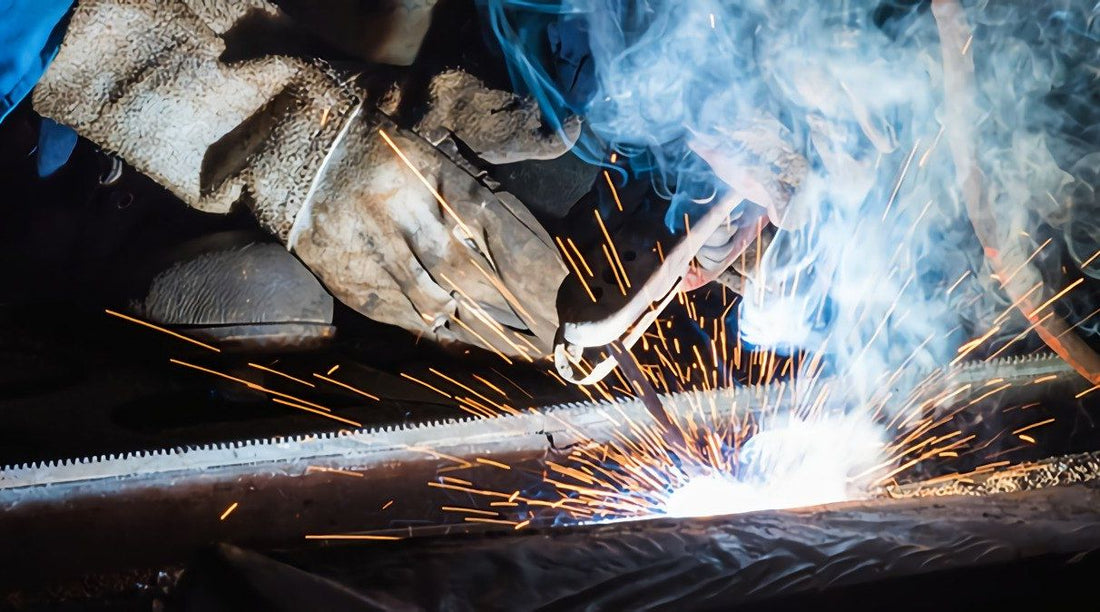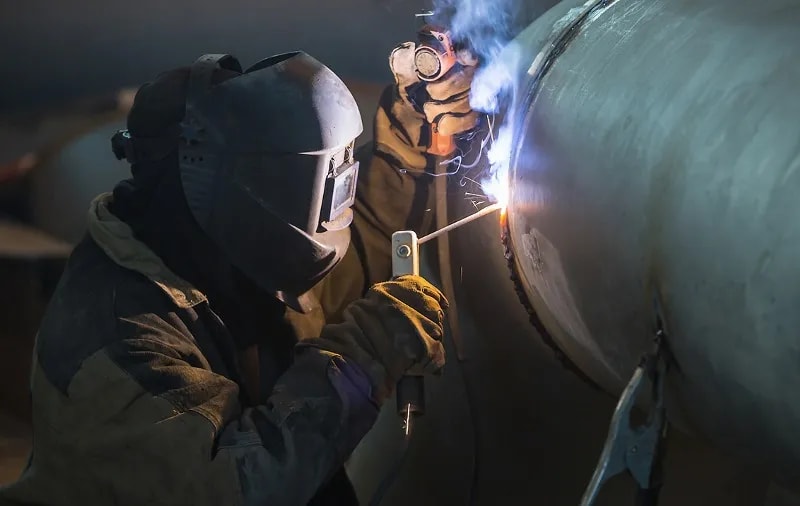Common Welding Repair Issues and Exactly How to Address Them Effectively
Welding repair work typically come across a variety of concerns that can jeopardize the stability of the final product. Typical issues consist of insufficient penetration, porosity, and imbalance, to name a few. Each defect offers unique obstacles that call for particular methods for resolution. Understanding these concerns is vital for welders aiming to boost their abilities and outcomes. This conversation will certainly discover these common welding fixing problems and efficient approaches to resolve them.
Inadequate Penetration
Inadequate infiltration happens when the weld metal falls short to totally fuse with the base product, causing weak joints and prospective structural failures. This concern often comes from insufficient warmth input, incorrect electrode angle, or improper welding rate. Welders might encounter inadequate infiltration because of a mistake of the essential specifications for a details material thickness or type. In addition, contamination on the base material's surface area can impede effective bonding, worsening the trouble. To deal with poor penetration, welders need to assure ideal settings on their equipment and preserve a tidy work surface. Normal examination of welds is advised to identify any type of deficiencies early, permitting prompt adjustments and the avoidance of endangered architectural integrity in welded settings up.
Porosity
Porosity is a common flaw in bonded joints that shows up as tiny gas bubbles caught within the weld steel. This defect can endanger the integrity of the weld, resulting in lowered stamina and potential failure under anxiety. Fabrication. Porosity normally develops from contamination, dampness, or incorrect welding techniques, which allow gases to get away into the liquified weld swimming pool. To resolve porosity, welders should ensure correct surface area prep work, preserve a tidy workplace, and make use of suitable welding specifications. Additionally, selecting the ideal filler material and securing gas can minimize gas entrapment. Regular assessment and testing of welds can help identify porosity early, assuring prompt rehabilitative activities are taken, consequently preserving the quality and integrity of the bonded structure
Imbalance
Misalignment in welding can occur from different aspects, consisting of incorrect setup and thermal expansion. Understanding the source is important for reliable resolution. Several improvement strategies are available to realign components and guarantee structural integrity.
Reasons for Misalignment
Welding misalignment typically originates from a variety of underlying problems that can jeopardize architectural integrity. One primary reason is incorrect fit-up of elements before welding, which can lead to gaps and irregular surface areas. Variants in thermal growth during the welding process can also cause distortion, especially if the products being signed up with have various coefficients of development. In addition, poor fixturing and securing may stop working to hold components safely in location, resulting in movement during welding. Poorly maintained devices, including welding equipments and tools, might introduce disparities in the weld grain, further adding to misalignment. Driver mistake, stemming from not enough training or experience, can additionally play a considerable function in developing misaligned welds.

Adjustment Methods Available
Attending to imbalance successfully calls for a combination of rehabilitative strategies tailored to the specific problems handy. One common method is using jigs or components to hold components in the right setting during welding, ensuring consistent positioning. Additionally, pre-heating the products can assist decrease distortion and boost fit-up. For significant imbalance, mechanical adjustment techniques, such as utilizing hydraulic jacks or clamps, can be employed to correct the setting before welding. Post-weld warm therapy might also be necessary to relieve anxieties created by misalignment. Careful evaluation and change during the arrangement stage can prevent misalignment concerns from becoming significant problems, promoting a smoother welding procedure and enhancing overall architectural honesty.
Distortion
Distortion is an usual challenge in welding that can arise from various aspects, consisting of uneven home heating and cooling. Comprehending the sources of distortion is necessary for applying reliable prevention strategies. Addressing this issue not just boosts structural honesty but likewise boosts the overall top quality of the weld.
Root causes of Distortion
When based on the intense warm of welding, products typically go through adjustments that can bring about distortion. This sensation primarily arises from thermal growth and contraction during the welding process. As the weld area warms up, the product increases; upon cooling, it contracts, which can produce inner stress and anxieties. In addition, uneven home heating across a work surface can worsen these tensions, resulting in warping or bending. The kind of product also plays a considerable function; steels with differing thermal conductivity and coefficients of growth may react in a different way, causing unpredictable distortions. Poor joint style and insufficient fixturing can add to misalignment during welding, boosting the probability of distortion. Comprehending these reasons is necessary for reliable welding repair service and avoidance techniques.
Prevention Techniques
Effective avoidance methods for distortion during welding concentrate on regulating warmth input and ensuring proper joint design. Maintaining a constant heat input aids to lessen thermal growth and contraction, which can bring about distortion. Using techniques such as preheating the workpiece can also decrease the temperature level gradient, promoting uniform heating. In addition, selecting appropriate joint designs, such as T-joints or lap joints, can improve security and decrease tension concentrations. Executing correct fixturing to protect the workpieces in position even more aids in keeping alignment throughout the welding procedure. Finally, staggered welding series can distribute warmth more evenly, preventing localized distortion. By using these methods, welders can greatly reduce the likelihood of distortion and enhance the total quality of their welds.
Splitting
Breaking is a typical issue encountered in welding repair work, typically arising from numerous factors such as inappropriate air conditioning prices, material option, or insufficient joint preparation. The event of fractures can greatly compromise the honesty of the weld, resulting in prospective failures during operation. get more info To address this problem, welders have to initially analyze the origin, guaranteeing that materials work and suitably picked for the specific application. In addition, regulating the cooling rate during the welding process is essential; quick air conditioning can induce tension and cause breaking. Proper joint design and preparation also add to decreasing the danger. Implementing these techniques can improve weld quality and sturdiness, eventually minimizing the chance of fracturing in completed weldments.

Incomplete Combination
A significant concern in welding repairs is insufficient fusion, which takes place when the weld steel does not adequately bond with the base material or previous weld passes - Welding. This issue can cause weaknesses in the joint, possibly jeopardizing the stability of the welded framework. Elements adding to incomplete blend include insufficient warm input, incorrect welding strategy, and contamination of the surface areas being joined. To resolve this concern properly, welders need to ensure correct pre-weld cleansing and surface area preparation, as well as readjust their welding parameters to accomplish appropriate infiltration and blend. Regular assessment throughout the welding process can also assist recognize incomplete combination early, permitting timely rehabilitative steps to enhance the general top quality of the weld
Overheating
While welding repair work can boost structural integrity, overheating presents a considerable difficulty that can cause product deterioration. Extreme warm throughout welding can change the mechanical homes of metals, leading to minimized stamina, boosted brittleness, and warping. This sensation is specifically critical in high-stress applications where architectural reliability is extremely important. Identifying overheating can involve aesthetic evaluations for staining or distortion, along with checking temperature during the welding process. To alleviate the threats related to overheating, welders need to employ ideal strategies, such as regulating warmth input, readjusting travel rate, and utilizing ideal filler materials. Furthermore, executing pre- and post-weld warmth therapies can assist restore material buildings and enhance the total top quality of the repair work, ensuring long-term performance and security.
Frequently Asked Concerns
What Are the Usual Signs of a Welding Issue?

Just How Can I Check My Welds for Quality?
To test welds for high quality, one can use visual evaluations, ultrasonic testing, and radiographic methods. Each method ensures structural stability, identifies issues, and confirms adherence to defined criteria, ultimately enhancing the dependability of the welded joints.
What Safety Precautions Should I Take While Welding?
When welding, one must focus on safety and security by using appropriate personal safety equipment, guaranteeing correct air flow, safeguarding combustible products away, keeping a tidy work space, and understanding environments to stop injuries and crashes.
Can I Repair a Weld Without Redesigning the Entire Joint?
Repairing a weld without redoing the entire joint is feasible, depending on the damage (Montana Mobile Welding and Repair). Strategies such as grinding, adding filler material, or making use of a welding procedure can efficiently deal with details defects while protecting the surrounding framework
What Devices Are Essential for Efficient Welding Services?
Essential devices for reliable welding repair work include a welding equipment, wire brush, grinder, safety equipment, clamps, and filler materials. Each tool plays an essential function in ensuring quality and security throughout the repair work process. Porosity generally emerges from contamination, wetness, or improper welding techniques, which permit gases to leave right into the liquified weld swimming pool. Inadequately kept devices, consisting of welding machines and devices, might present disparities in the weld grain, further adding to imbalance. When subjected to the extreme heat of welding, products typically undergo adjustments that can lead to distortion. Splitting is an usual problem run into in welding repair services, frequently resulting from different aspects such as incorrect cooling prices, product selection, or insufficient joint preparation. A substantial problem in welding repairs is insufficient blend, which takes place when the weld steel does not adequately bond with the base product or previous weld passes.